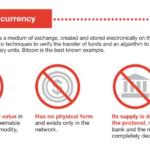Crypto lead in to coin nyt: The New York Times’ coverage of cryptocurrencies has significantly influenced public perception and market trends. This exploration delves into the correlation between Bitcoin’s price volatility and the frequency of NYT articles, examining how regulatory announcements and emerging technologies shape the newspaper’s narrative. We’ll analyze the evolution of the NYT’s editorial stance on crypto, comparing its approach to that of other major news outlets, and considering the ethical implications of its reporting.
From the initial skepticism surrounding Bitcoin to its current, more nuanced coverage, the NYT’s reporting reflects the dynamic nature of the cryptocurrency market. This analysis will dissect the newspaper’s use of data and statistics, assessing its accuracy and potential biases, while also exploring how its framing of cryptocurrencies impacts investor sentiment and public policy. We’ll also look ahead, predicting future trends in NYT’s crypto coverage and the potential impact of emerging technologies like Web3 and DeFi.
Cryptocurrency Market Trends Influencing NYT Coverage
The New York Times’ coverage of cryptocurrencies is demonstrably influenced by shifts in the market and broader regulatory landscapes. The frequency and tone of their articles reflect the prevailing sentiment and volatility within the crypto space, creating a dynamic relationship between market trends and journalistic output. This interplay is evident in several key areas.
Bitcoin’s price action serves as a significant driver of NYT’s reporting. Periods of extreme price volatility, whether dramatic increases or sharp declines, typically correlate with increased coverage. For instance, the 2017 bull run saw a surge in NYT articles discussing Bitcoin’s meteoric rise and its potential to disrupt traditional finance. Conversely, market crashes, such as the one in 2022, usually result in articles analyzing the causes of the downturn and the potential consequences for the broader crypto market. This correlation highlights the news organization’s responsiveness to significant market events.
Regulatory Announcements and NYT Reporting
Major regulatory announcements significantly impact the NYT’s cryptocurrency reporting. Government actions, whether supportive or restrictive, immediately shape the narrative. For example, the SEC’s increased scrutiny of crypto exchanges and stablecoins has led to numerous NYT articles exploring the regulatory challenges facing the industry and the potential implications for investors. Similarly, announcements from international bodies like the G20 regarding crypto regulation also prompt significant coverage, often focusing on the global implications of such policies and their impact on market stability. The NYT’s reporting in these instances reflects the crucial role of regulation in shaping the future of cryptocurrencies.
Emerging Crypto Technologies and NYT’s Narrative
The emergence of new crypto technologies influences the narratives presented in NYT articles. The rise of decentralized finance (DeFi), non-fungible tokens (NFTs), and the metaverse has led to increased coverage of these areas, often exploring their potential benefits and risks. For instance, the rapid growth of the NFT market in 2021 resulted in several NYT articles examining the cultural and economic impact of digital art and collectibles. Similarly, developments in the metaverse and its intersection with cryptocurrencies have prompted articles discussing the future of virtual worlds and their economic potential. The NYT’s coverage demonstrates a commitment to reporting on these evolving technological landscapes and their implications for society.
NYT’s Editorial Stance on Cryptocurrencies Over Time
The New York Times’ coverage of cryptocurrencies has undergone a significant evolution since the initial bursts of excitement and subsequent crashes in the market. Early articles often focused on the speculative nature of crypto and its potential for both massive gains and devastating losses, reflecting a cautious and sometimes skeptical viewpoint. More recently, however, the NYT’s coverage has become more nuanced, acknowledging the growing mainstream adoption and the technological underpinnings of the industry.
The shift in the NYT’s editorial stance can be largely attributed to the maturation of the cryptocurrency market itself. The initial hype surrounding Bitcoin and other cryptocurrencies gave way to a period of consolidation and regulatory scrutiny. This period saw increased focus on the risks associated with crypto investments, including scams, volatility, and regulatory uncertainty. However, as the technology has developed and institutional adoption has grown, the NYT’s coverage has increasingly acknowledged the potential benefits and long-term implications of blockchain technology and digital assets.
Evolution of NYT’s Cryptocurrency Coverage from 2017 to Present
The tone of NYT articles concerning cryptocurrencies in 2017 was predominantly characterized by a mixture of fascination and apprehension. Articles often highlighted the rapid price fluctuations, the potential for scams, and the lack of clear regulatory frameworks. For example, articles from this period might focus on the speculative bubble surrounding Bitcoin’s price surge, emphasizing the potential for significant losses. In contrast, more recent articles (2023 and beyond) often present a more balanced perspective, acknowledging both the risks and the potential benefits of cryptocurrencies, including their use in decentralized finance (DeFi), non-fungible tokens (NFTs), and the metaverse. The focus has shifted from purely speculative aspects to a broader discussion encompassing the technology’s underlying principles, its societal impact, and its integration into existing financial systems.
NYT’s Perspective on Cryptocurrency Regulation and Adoption
Initially, the NYT’s reporting on cryptocurrency regulation reflected the uncertainty surrounding the legal landscape. Many articles highlighted the lack of clear guidelines from governments worldwide and the potential for regulatory crackdowns. The focus was often on the challenges regulators faced in overseeing a decentralized and rapidly evolving technology. However, as regulatory frameworks began to emerge in various jurisdictions, the NYT’s coverage shifted to analyzing the effectiveness and implications of these regulations. More recent articles explore the various approaches different governments are taking, comparing their strategies and evaluating their impact on the market. The discussion has moved beyond simple warnings about regulatory uncertainty to a more sophisticated analysis of the complexities of regulating a global, decentralized technology.
Examples of NYT Articles Showcasing Positive and Negative Aspects of Crypto
A prime example of a negative portrayal would be an article detailing a significant cryptocurrency exchange hack or a major scam involving initial coin offerings (ICOs). These pieces would highlight the risks associated with investing in cryptocurrencies and the vulnerability of the ecosystem to fraud. Conversely, articles showcasing positive aspects might focus on the use of blockchain technology to improve supply chain transparency, enhance voting security, or facilitate cross-border payments. For instance, an article might detail how a specific company uses blockchain to track ethically sourced products, emphasizing the positive impact on consumers and businesses. The shift in the NYT’s reporting is visible in the increased number of articles that explore the potential benefits of blockchain technology beyond its use as a speculative investment vehicle.
Influence of Specific Cryptocurrencies on NYT Coverage
The New York Times’ coverage of cryptocurrencies reflects the dynamic nature of the market, with certain digital assets receiving significantly more attention than others. This disparity in coverage is influenced by a number of factors, including market capitalization, technological innovation, regulatory developments, and the overall narrative surrounding each cryptocurrency. Analyzing this coverage reveals insights into the NYT’s editorial priorities and the broader public perception of different crypto projects.
The prominence of Bitcoin versus altcoins in NYT reporting is stark. Bitcoin, as the first and most established cryptocurrency, consistently dominates the headlines. Its price movements, technological advancements, and regulatory scrutiny are frequently reported, establishing it as the benchmark against which other cryptocurrencies are often measured. Altcoins, while sometimes featured, generally receive less extensive coverage, often appearing in articles focusing on broader market trends or specific technological innovations within the altcoin ecosystem.
Bitcoin’s Dominance in NYT Reporting
The New York Times’ extensive coverage of Bitcoin is unsurprising given its market dominance and historical significance. Numerous articles detail Bitcoin’s price fluctuations, analyzing their impact on the broader cryptocurrency market and the global economy. For example, articles analyzing the impact of Bitcoin’s halving events – periodic reductions in the rate at which new Bitcoins are created – illustrate the NYT’s focus on Bitcoin’s fundamental mechanics and their market consequences. Further, the NYT often reports on Bitcoin’s adoption by institutional investors, highlighting its growing legitimacy within traditional finance. This sustained attention reflects Bitcoin’s established position as the leading cryptocurrency and its significant influence on the overall crypto landscape.
NYT Coverage and Market Capitalization
A strong correlation exists between a cryptocurrency’s market capitalization and the extent of NYT coverage it receives. Cryptocurrencies with larger market caps, like Ethereum, tend to receive more attention than those with smaller caps. This is logical; larger market cap cryptocurrencies generally represent a larger investment pool and thus hold greater significance for market trends. The NYT’s reporting reflects this reality, often focusing on the price movements and technological developments of high-market-cap cryptocurrencies. Articles analyzing the Ethereum blockchain’s role in decentralized finance (DeFi), for instance, showcase the NYT’s attention to influential projects within the larger crypto ecosystem. However, it’s important to note that even within the high-market-cap category, the level of NYT coverage varies depending on the news cycle and other factors.
Examples of NYT Articles Focusing on Specific Crypto Projects, Crypto lead in to coin nyt
The NYT has published articles focusing on various specific crypto projects, often highlighting their unique features or controversies. For instance, articles covering the rise and fall of specific altcoins illustrate the volatility of the cryptocurrency market and the risks associated with investing in less established projects. These articles often provide context on the technology behind these projects, the teams involved, and the potential impact of regulatory changes. Another example would be articles analyzing the impact of specific blockchain platforms on supply chains or other industries, showcasing the NYT’s interest in the practical applications of blockchain technology beyond just financial speculation. The selection of specific crypto projects for in-depth coverage demonstrates the NYT’s editorial judgment in identifying significant developments within the rapidly evolving cryptocurrency landscape.
The Role of Key Players in Shaping NYT’s Narrative

The New York Times’ coverage of cryptocurrencies isn’t solely driven by market fluctuations; it’s significantly shaped by the prominent figures and organizations frequently featured in its articles. These individuals and entities, through their actions, statements, and influence, contribute to the overall narrative presented by the NYT, impacting public perception and shaping the ongoing conversation around digital assets. Understanding their roles is crucial to analyzing the newspaper’s reporting objectively.
The NYT’s portrayal of the crypto space is influenced by a complex interplay of perspectives. While aiming for objectivity, the newspaper’s coverage inevitably reflects the voices and actions of key players, both positive and negative, creating a nuanced and often multifaceted picture. This influence manifests in various ways, from highlighting specific projects and individuals to framing the broader regulatory and technological debates surrounding cryptocurrencies.
Prominent Figures and Organizations in NYT Crypto Coverage
The NYT’s crypto coverage frequently features individuals and organizations who significantly impact the industry’s trajectory. These include prominent entrepreneurs like Sam Bankman-Fried (SBF), whose downfall received extensive coverage, highlighting the risks associated with the crypto space. Regulatory bodies like the Securities and Exchange Commission (SEC) and the Commodity Futures Trading Commission (CFTC) are also frequently mentioned, reflecting the evolving regulatory landscape. Finally, influential figures within the crypto community, such as developers and investors, contribute to the diversity of viewpoints presented. The inclusion of these diverse voices helps the NYT to present a balanced, albeit sometimes conflicting, view of the crypto world.
Influence of Key Players on NYT’s Portrayal of the Crypto Space
The actions and statements of these key players directly influence how the NYT frames its stories. For example, SBF’s collapse resulted in numerous articles examining the risks of centralized exchanges and the lack of robust regulatory oversight. Similarly, statements from the SEC regarding the classification of certain cryptocurrencies as securities have shaped the NYT’s coverage of regulatory challenges and legal battles. Conversely, positive developments in the space, such as the growing adoption of blockchain technology in other sectors, are also highlighted, reflecting a balanced approach to reporting. The NYT’s reliance on official statements and expert opinions contributes to its perceived credibility, but it also means that the narrative is partly shaped by the sources it chooses to include.
Representation of Different Viewpoints within the Crypto Community
The NYT strives to present a balanced view, incorporating diverse perspectives from within the crypto community. While the focus often falls on established players and large-scale events, the newspaper occasionally features articles exploring niche applications of blockchain technology or highlighting the perspectives of smaller projects and individual investors. However, the dominant narrative often reflects the viewpoints of established figures and organizations, potentially overshadowing alternative perspectives. The challenge for the NYT, and other news outlets, lies in finding a balance between reporting on major developments and providing a platform for a broader range of voices within the often-polarized crypto community.
Analysis of NYT’s Use of Data and Statistics in Crypto Reporting: Crypto Lead In To Coin Nyt
The New York Times’ coverage of cryptocurrencies often incorporates data and statistical analysis to support its narratives. This analysis examines the types of data used, the visualization techniques employed, and an assessment of the accuracy and potential biases present in their reporting. Understanding this approach is crucial for critically evaluating the information presented.
Data Points Commonly Used in NYT Crypto Articles
The NYT utilizes a range of quantitative data to illustrate the state of the cryptocurrency market and the performance of individual digital assets. This data provides a factual foundation for their reporting, allowing readers to grasp the scale and volatility of the market.
| Data Point | Description | Example Usage | Potential Bias |
|---|---|---|---|
| Price (USD) | The current market value of a cryptocurrency in US dollars. | Reporting on Bitcoin’s price reaching a new all-time high. | Susceptible to short-term fluctuations and manipulation. |
| Market Capitalization | The total value of all coins in circulation. | Comparing the market cap of Bitcoin to that of Ethereum. | Can be inflated by speculative trading. |
| Transaction Volume | The total value of cryptocurrency transactions over a given period. | Highlighting increased transaction volume during periods of high market activity. | May not reflect real economic activity; could be influenced by wash trading. |
| Bitcoin dominance | The percentage of the total cryptocurrency market capitalization held by Bitcoin. | Illustrating Bitcoin’s decreasing dominance as altcoins gain market share. | Reflects only the market share, not the underlying technology or use cases. |
Visualization of Crypto Market Trends Using Charts and Graphs
The NYT frequently employs visual aids to present complex data in a more accessible and engaging manner. These visuals are instrumental in conveying trends and patterns within the cryptocurrency market.
Line graphs are commonly used to illustrate the price movements of cryptocurrencies over time. These graphs clearly show periods of growth, decline, and volatility, providing a visual representation of market fluctuations. The use of color-coding and clear labeling enhances readability and comprehension. For instance, a line graph might depict Bitcoin’s price over a year, highlighting significant price peaks and troughs. Bar charts are often used to compare the market capitalization of different cryptocurrencies, providing a snapshot of market dominance. For example, a bar chart could visually represent the relative sizes of Bitcoin, Ethereum, and other major cryptocurrencies. Pie charts are occasionally used to illustrate the distribution of cryptocurrency holdings or the percentage of the market held by various assets.
Accuracy and Potential Biases in NYT’s Crypto Data
While the NYT generally strives for accuracy in its data presentation, potential biases can exist. The sources of data, the selection of specific data points, and the framing of the presentation can all influence the reader’s interpretation. For example, focusing solely on price movements might overlook the underlying technological developments or regulatory changes impacting the market. Similarly, reliance on data from specific exchanges could introduce bias, as different exchanges may have varying levels of liquidity and reporting standards. It is therefore crucial for readers to approach the data presented with a critical eye, considering the potential limitations and biases inherent in any data-driven analysis.
Impact of NYT’s Reporting on Public Perception of Crypto
The New York Times, as a highly influential news source, holds significant power in shaping public perception of cryptocurrencies. Its reporting, through the framing of narratives and the selection of information presented, directly impacts investor sentiment and the overall public understanding of this complex and evolving technological landscape. This influence extends to regulatory discussions and policy decisions, underscoring the newspaper’s role as a key player in the crypto ecosystem.
The NYT’s framing of cryptocurrencies significantly influences public opinion and investor sentiment. Positive articles, focusing on technological innovation or successful investment stories, can boost investor confidence and drive market growth. Conversely, negative or skeptical pieces, highlighting risks, scams, or regulatory uncertainty, can trigger sell-offs and fuel public apprehension. This effect is amplified by the NYT’s large readership and its perceived authority on financial matters. For instance, a critical article on a specific cryptocurrency could lead to a sharp drop in its price, reflecting a direct correlation between the NYT’s coverage and market reactions. Similarly, a piece highlighting the potential of blockchain technology for supply chain management might generate increased interest in the space and attract new investors.
NYT Coverage and Regulatory Decisions
NYT’s coverage has, on several occasions, influenced regulatory discussions and public policy concerning cryptocurrencies. For example, articles detailing the environmental impact of certain cryptocurrencies, particularly Bitcoin’s energy consumption, have contributed to the ongoing debate around sustainable blockchain technologies and potentially influenced regulatory scrutiny of energy-intensive mining practices. Furthermore, detailed reports on cryptocurrency-related scams and fraud have helped raise awareness among policymakers and regulators, leading to stricter enforcement measures and the development of more comprehensive regulatory frameworks. The publication’s investigative journalism into specific instances of market manipulation or illicit activities has also provided policymakers with valuable information to inform their decision-making processes.
NYT Reporting and the Creation/Alleviation of FUD
The NYT’s reporting has the potential to both create and alleviate FUD (fear, uncertainty, and doubt) within the crypto community. Sensationalized headlines or articles focusing primarily on negative aspects, such as price volatility or security breaches, can exacerbate existing fears and uncertainties, leading to widespread panic selling and a general decline in investor confidence. Conversely, well-researched and balanced articles that offer a nuanced perspective on the risks and opportunities associated with cryptocurrencies can help alleviate FUD by providing investors with a clearer understanding of the technology and its potential applications. The NYT’s ability to shape narratives, therefore, plays a critical role in influencing the overall sentiment and stability of the crypto market. A balanced and informative approach can help foster a more rational and informed investment environment, reducing the impact of speculative trading driven by fear or hype.
Comparison of NYT’s Crypto Coverage with Other Major News Outlets
The New York Times’ coverage of cryptocurrencies occupies a unique space within the broader financial news landscape. While sharing some common ground with competitors like Bloomberg, Reuters, and the Wall Street Journal, distinct editorial approaches and focuses differentiate its reporting. This analysis compares and contrasts the NYT’s cryptocurrency coverage with these other major news outlets, highlighting both its strengths and weaknesses.
The NYT, known for its in-depth investigative journalism and narrative-driven pieces, often adopts a more and less purely market-focused approach than its competitors. While Bloomberg and Reuters prioritize breaking news and real-time market data, the NYT tends to delve deeper into the societal, technological, and regulatory implications of cryptocurrencies. The Wall Street Journal, while offering in-depth analysis, often maintains a closer alignment with traditional finance perspectives.
Differences in Editorial Focus
The NYT’s coverage frequently explores the broader societal impact of cryptocurrencies, including their potential to disrupt financial systems, their use in illicit activities, and their environmental consequences. This contrasts with Bloomberg and Reuters, which generally concentrate on price movements, regulatory developments, and the activities of major players in the market. The WSJ often focuses on the business and economic aspects of crypto, analyzing the performance of crypto companies and their impact on traditional financial markets. The NYT’s approach, while potentially less immediately relevant to traders, offers a more nuanced understanding of the technology’s long-term implications.
Strengths and Weaknesses of NYT’s Approach
A significant strength of the NYT’s approach is its ability to contextualize the cryptocurrency market within a broader social and political framework. This provides readers with a richer understanding of the forces shaping the industry. However, this approach can sometimes lead to less timely reporting on market fluctuations compared to Bloomberg or Reuters, which are optimized for speed. Furthermore, the NYT’s focus on narrative and investigative journalism can occasionally result in less comprehensive coverage of technical details relevant to serious cryptocurrency investors. The WSJ, for example, often provides more detailed financial analysis and market commentary. Ultimately, the NYT’s strength lies in providing context and perspective, while its competitors excel in delivering rapid, data-driven reporting.
Future Trends in NYT’s Crypto Coverage

The New York Times’ coverage of cryptocurrencies has matured significantly since its early days of cautious observation. Future trends suggest a shift towards more nuanced and sophisticated reporting, reflecting the increasing complexity and integration of crypto into the global financial landscape. We can expect a deeper dive into the regulatory landscape, the societal impacts, and the technological advancements driving this rapidly evolving sector.
The increasing sophistication of the crypto space will necessitate a corresponding increase in the sophistication of NYT’s reporting. This means moving beyond simple price fluctuations and delving into the underlying technologies, economic models, and social implications of various crypto projects and applications. The NYT’s resources and journalistic rigor will be crucial in providing clear, accurate, and insightful analyses for its readership.
Impact of Emerging Technologies on NYT Reporting
The rise of Web3 and decentralized finance (DeFi) will significantly shape NYT’s future crypto coverage. Web3’s emphasis on decentralization and user ownership will require the NYT to grapple with complex technological concepts and their potential impact on various sectors, from finance and media to governance and social interactions. Similarly, the emergence of DeFi protocols and their potential to disrupt traditional financial systems will necessitate in-depth analysis of their risks and benefits, including their impact on financial stability and consumer protection. The NYT will likely dedicate more resources to explaining these complex technologies in an accessible way for its readers, potentially employing data visualizations and interactive features to enhance understanding. The paper might even start experimenting with Web3 technologies for its own operations, providing a unique perspective on their real-world applications. For example, they could explore using blockchain technology to verify the authenticity of their news articles, further reinforcing their commitment to journalistic integrity in the digital age.
A Hypothetical Future NYT Article Headline and Content Description
Headline: “DeFi’s Shadow: How Decentralized Finance Is Reshaping Global Inequality.”
Content Description: This article would explore the potential for DeFi protocols to exacerbate existing inequalities, focusing on access to financial services, algorithmic bias in lending platforms, and the concentration of wealth within the DeFi ecosystem. It would include interviews with experts, case studies of individuals impacted by DeFi, and a data-driven analysis of wealth distribution within the decentralized finance sector. The article would move beyond simplistic narratives of DeFi as a purely democratizing force, acknowledging both its potential benefits and inherent risks, particularly for vulnerable populations. The piece would likely draw parallels with existing financial inequalities, highlighting the potential for DeFi to both amplify and mitigate these issues, depending on the regulatory frameworks and technological developments that shape its evolution. The article would use data visualizations to illustrate the concentration of wealth and access to DeFi services, potentially using interactive maps to show geographical disparities in participation.
Ethical Considerations in NYT’s Crypto Reporting
The New York Times, a publication with a long history of impactful journalism, faces unique ethical challenges when covering the volatile and rapidly evolving cryptocurrency market. Its reporting holds significant sway over public perception, making transparency, accuracy, and a conscious effort to avoid conflicts of interest paramount. The potential for financial gain, personal investments, or relationships with individuals or companies in the crypto space presents inherent risks to journalistic integrity.
The importance of transparency and accuracy in reporting on this volatile market cannot be overstated. Misinformation can lead to significant financial losses for readers and contribute to market instability. The inherent complexity of blockchain technology, decentralized finance (DeFi), and the speculative nature of many cryptocurrencies demand meticulous fact-checking and a clear, unbiased presentation of information. The NYT’s reputation relies on maintaining its credibility in this area, especially given the high stakes involved for investors and the broader public.
Potential Conflicts of Interest and Biases
The NYT’s financial reporting often intersects with the business world, creating potential conflicts of interest when covering cryptocurrencies. For example, if a reporter owns cryptocurrency, their reporting might unintentionally lean towards a more positive or negative perspective depending on their personal holdings. Similarly, advertising revenue from cryptocurrency companies could subtly influence editorial decisions, creating a bias towards favorable coverage. The NYT’s internal policies regarding personal investments and disclosure of conflicts are crucial in mitigating these risks. A lack of transparency in these areas could undermine public trust. Furthermore, the inherent volatility of the crypto market might pressure reporters to prioritize sensationalism over balanced reporting, potentially distorting the narrative and leading to misleading conclusions.
Transparency and Accuracy Best Practices
Maintaining transparency and accuracy in crypto reporting requires a multi-pronged approach. The NYT, and other news organizations, should adhere to a strict set of best practices to ensure ethical and responsible journalism.
- Full Disclosure of Conflicts of Interest: Reporters should disclose any personal investments or relationships with individuals or companies in the cryptocurrency industry. This includes past investments, current holdings, and any familial ties to the sector.
- Rigorous Fact-Checking and Verification: All information presented, especially technical details and financial data, must be thoroughly verified through multiple independent sources. This includes scrutinizing press releases, white papers, and claims made by cryptocurrency projects and their representatives.
- Clear Distinction Between News and Opinion: The NYT should maintain a strict separation between news reporting and opinion pieces. Opinion pieces should be clearly labeled as such, and any potential conflicts of interest for opinion writers should also be disclosed.
- Avoiding Sensationalism and Speculation: While acknowledging the volatile nature of the market, reporting should focus on factual information and avoid sensational headlines or language that encourages speculation or fear-mongering.
- Contextualization of Information: Cryptocurrency news should be presented within a broader economic and technological context, avoiding oversimplification or misleading generalizations.
- Expert Consultation and Diverse Perspectives: The NYT should seek input from a range of experts, including academics, economists, and technologists, to provide a balanced and comprehensive understanding of the issues.
- Correction Policy: A clear and readily accessible correction policy should be in place to address any inaccuracies or errors promptly and transparently.
Conclusion
In conclusion, the New York Times’ coverage of cryptocurrencies offers a valuable lens through which to examine the evolution of this rapidly changing market. While its reporting has undoubtedly influenced public perception and regulatory decisions, a critical analysis reveals both strengths and weaknesses in its approach. Understanding the nuances of the NYT’s narrative, including its use of data, its evolving editorial stance, and its comparison to other news outlets, provides crucial context for navigating the complex world of cryptocurrency. The ongoing evolution of the crypto space ensures that the NYT’s role in shaping public understanding will remain a subject of ongoing interest and analysis.
The recent surge in crypto leads is directly influencing the Coin NYT’s reporting, focusing more on market trends and technological advancements. Understanding the fundamentals is crucial for informed analysis; a great starting point is learning what cryptocurrency actually is by visiting this helpful resource: What is Cryptocurrency. This knowledge helps decipher the complexities driving the current crypto lead influx and its impact on Coin NYT’s coverage.
The recent surge in crypto leads is directly influencing the Coin NYT’s reporting, focusing more on market trends and technological advancements. Understanding the fundamentals is crucial for informed analysis; a great starting point is learning what cryptocurrency actually is by visiting this helpful resource: What is Cryptocurrency. This knowledge helps decipher the complexities driving the current crypto lead influx and its impact on Coin NYT’s coverage.
The recent surge in crypto leads is directly influencing the Coin NYT’s reporting, focusing more on market trends and technological advancements. Understanding the fundamentals is crucial for informed analysis; a great starting point is learning what cryptocurrency actually is by visiting this helpful resource: What is Cryptocurrency. This knowledge helps decipher the complexities driving the current crypto lead influx and its impact on Coin NYT’s coverage.





